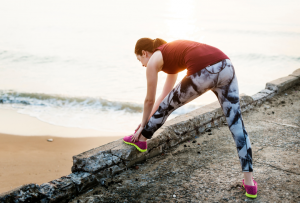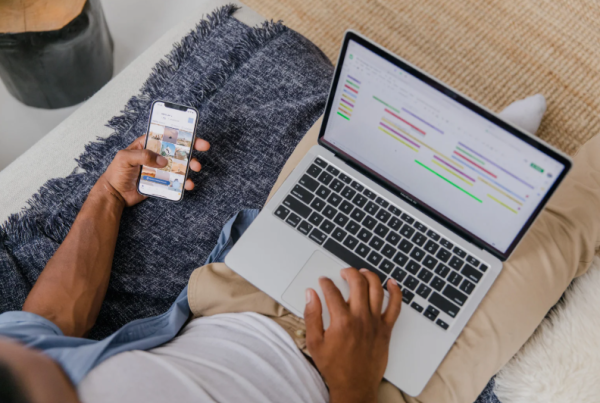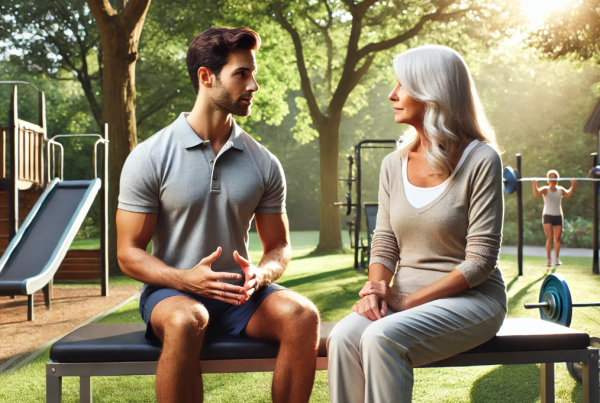Active vs passive treatment. Which is better?
Ok, yes, we as Exercise Physiologists obviously love prescribing therapy that is “active” in nature. It’s what we’re trained in and it’s what we see, day in and day out, bring the most benefit to patients referred for our services. It would, however, be naive of us to assume that active treatment is the be-all and end-all of all treatment! Most musculoskeletal conditions are going to require a mixture of both “active” and “passive” modalities over the timeline of their recovery.
They both have their place. The difficulties often ensue at the crucial crossover point, where both forms of therapy can be justified and the transition from passive to active therapy is not so clear cut. So when is the most appropriate time for each? And what does it even mean to differentiate between active versus passive treatment?
This article (1) described the differences well:
“Passive treatments require the patient to be a submissive recipient of treatment.”
In other words, the treatment is applied to them. They don’t need to do anything other than sit there and receive it. On the other hand…
“[Active treatments] rely on the patient to actively participate in these techniques at home away from the clinic.”
The individual must make an effort to engage and be involved with their rehabilitation. By doing this, they must take responsibility for their rehabilitation outcomes.
Passive treatment can include medication/supplements, surgery, massage therapy, acupuncture or joint mobilisation, among others. Active treatment may involve exercise (of any form, including stretching, strengthening, aerobic, balance, other), and even completing tasks such as mindfulness, psychotherapy, or the use of biofeedback! While one may think of these tasks as ‘inactive’ or sedentary, they do still require a conscious effort – ‘brain exercise’ so to speak – and can therefore be classified as ‘active’ treatment.
Which is Better?
Perhaps it is not so much a case of ‘which is better’, but of which is better at that particular stage of recovery. Passive treatment can be an effective method of pain relief, in particular for acute conditions (0-12 weeks). Sometimes a good massage is all you need! And the expertise of a manual (hands-on) therapist might just be able to get into that knot in the muscle, or get you back into alignment, that bit easier…

Active treatment should also be integrated within the acute phase of recovery (as soon as is possible!) to facilitate the outcomes of the passive treatment. It becomes even more important in chronic conditions (12 weeks onwards) for long-term injury management and relapse prevention. If someone has sprained their ankle for example, they would be advised to engage in some form of independent management strategies, such as stretching and strength work, in order to prevent re-injury in future. For a mental health condition, practising meditation or grounding strategies regularly are imperative to help them deal with future stressors.
Why We Advocate for Active Treatment
Passive treatment – if it continues for longer than required (and in the absence of active treatment) – does come with some downfalls.
Unfortunately, it puts the rehabilitation outcomes into the hands of the therapist, instead of the individual themself. While many may prefer to be ‘fixed’ by someone else, this creates a level of dependency on the therapist and misses the vital opportunity to provide them with the skills to manage their condition themself.
For an acute condition, no big deal. They can receive their treatment, recover, and continue on their merry way. When it comes to chronic conditions however, independent self-management is the key to successful and sustainable outcomes. It’s simply not sustainable to rely on someone else to be there to provide treatment every time you need it!
It also means that some of the factors that can negatively impact recovery outcomes, such as fear-avoidance behaviours, lack of confidence for overcoming setbacks, and reinforcing thought patterns, are left unchanged. The patient does not gain that real-life, physical, experience that proves to themself that they are able to understand, influence and manage their symptoms.
Our Experience as EP’s
As exercise physiologists, we deal mostly in the chronic condition space. The individuals that we see have often been struggling with their condition for many months or even years. So in our world, unless there is a specific reason that contra-indicates an active approach (i.e. loading restrictions), active treatment is the way to go, with passive treatments there as an adjunct if needed to support the journey.
The most valuable way that we can help these clients is by empowering them to take their health into their own hands, and teaching them the skills to do the healing themself.
References:
- Role of Active Versus Passive Complementary and Integrative Health Approaches in Pain Management (Cosio & Lin 2018) https://www.ncbi.nlm.nih.gov/pmc/articles/PMC5896844/
Author: Yolanda van Vugt Clinical Exercise Physiologist and Content Creator at Specialised Health
Let’s connect, find us:
Have you got a claimant that would benefit from E.P. support? Refer to the team!
#exercisephysiology #exerciserehab #rehabilitation #lifeinsurance #incomeprotection #ctp #workcover #mobile #mobileexercisephysiology #returntowork #fatigue #mentalhealth #cancer #musculoskeletal #injury #pain #physio #physiotherapy #Sydney #Brisbane #Melbourne #Adelaide #Auckland #Waikato #BayofPlenty #Wellington #Otago #Christchurch



